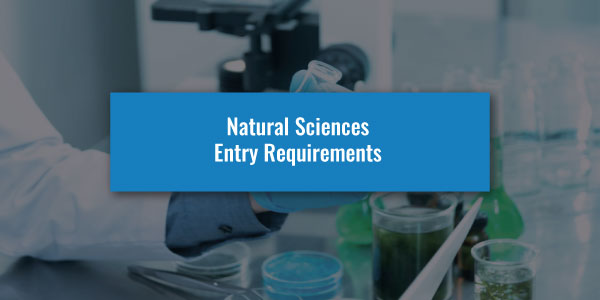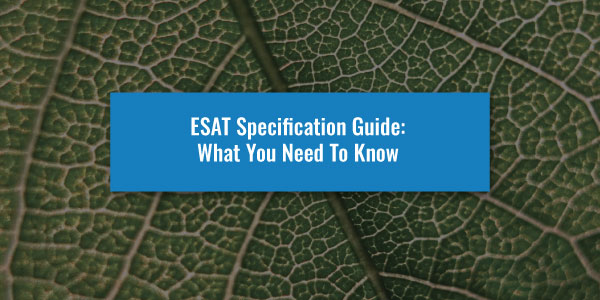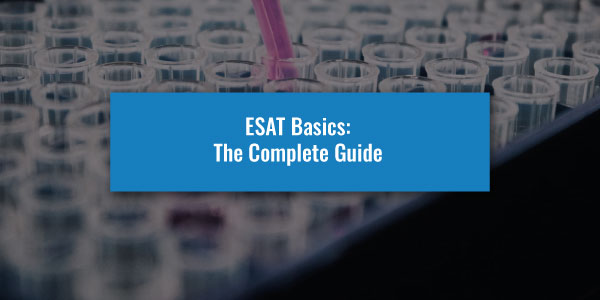The NSAA is being replaced by the ESAT exam. You can read more about the new exam here. NSAA past papers will still be useful when preparing for the ESAT.
If you are thinking of applying to Natural Science or Veterinary Science at the University of Cambridge, you will likely have come across the NSAA.
The NSAA is an Admission Test splint into two separate sections – Section 1 and Section 2. Though there are similarities between the two they are different.
We will go over everything you need to know for the NSAA Section 1.
What is section 1 of the NSAA?
Section 1 is the most time-pressured section of the Natural Science Admissions Assessment. The section tests Biology, Chemistry, Physics and Maths covering content you will have learnt at GCSE and A-Level.
You have to answer 40 multiple-choice questions in 60 minutes. These questions can be quite difficult and it is easy to get bogged down by them.
Choosing Which Section You Are Going To Answer
As part of Section 1 it is compulsory for you to answer Part A – Maths. This leaves you with Part B (Physics), Part C (Chemistry) and Part D (Biology) to choose between.
In most cases, it will be immediately obvious to you which part will suit you best – and it is probably best to know which one you will be answering ahead of sitting the NSAA so you can prepare for effectively.
Generally, applicants for Physical Natural Sciences will choose Physics whilst those for Biological Natural Sciences will choose Biology or Chemistry.
This is by no means a hard and fast rule, just like the Natural Science Tripos itself.
If you are unsure, take the time to review the content of each section and try out some questions so you can get a better idea of the style and difficulty of the questions.
In general, the Biology and Chemistry questions in the NSAA require the least amount of time per question, whilst the Maths and Physics are more time-draining as they usually consist of multi-step calculations,
Searching for NSAA support to strengthen your application?
The NSAA is a vital component of your Natural Science and Veterinary Science application so scoring highly can mean the difference between an offer or rejection. At UniAdmissions, we are experts at boosting your NSAA score and maximising your chances of gaining a place.
Discover our NSAA Programme by clicking the button below to enrol and triple your chances of success.
What Is Section 1A of the NSAA?
Section 1A is the only Part of the NSAA which is compulsory to be answered.
Being confident with Math is extremely important for the NSAA.
Many candidates find that improving their numerical and algebraic skills usually results in big improvements in not just Section 1 but also their Section 2 score.
Remember that Maths in Section 1 not only comes up in the Maths questions but also in Physics (manipulating equations and standard form) and Chemistry (mass calculations).
If you find yourself consistently running out of time in Section 1, spending a few hours brushing up your basic Maths skills should give you a boost.
Even good students who are studying Maths at A2 can struggle with certain NSAA Maths topics, so make sure you prepare effectively.
Example NSAA Section 1 Maths Question
How many solutions are there for: 2(2(𝑥² − 3𝑥)) = −9 ?
- 0
- 1
- 2
- 3
- Infinite solutions.
Answer: 2
Expand the brackets to give: 4𝑥² − 12𝑥 + 9 = 0.
Factorise: (2𝑥 − 3)(2𝑥 − 3) = 0.
Thus, only one solution exists, x = 1.5.
Note that you could also use the fact that the discriminant, 𝑏² − 4𝑎𝑐 = 0 to get the answer.
What Is Section 1B of the NSAA?
Physics questions in the NSAA are challenging as they frequently require you to make leaps in logic and calculations.
Therefore when you begin your preparations, make sure you have a firm understanding of the major principles and are confident with commonly examined topics like Newtonian mechanics, electrical circuits and radioactive decay.
Depending on the specification your college/sixth form uses you may not have covered these topics at school so some independent study may be needed.
The majority of the Physics questions involve a fair bit of Maths – this means you need to be comfortable with converting between units and also powers of 10.
Most questions require two step calculations.
Example NSAA Section 1 Physics Question
Which of the following statements are FALSE?
- Electromagnetic waves cause things to heat up.
- X-rays and gamma rays can knock electrons out of their orbits.
- Loud sounds can make objects vibrate.
- Wave power can be used to generate electricity.
- Since waves carry energy away, the source of a wave loses energy.
- The amplitude of a wave determines its mass.
Answer: 6
That the amplitude of a wave determines its mass is false. Waves are not objects and do not have mass.
What Is Section 1C of the NSAA?
Generally, candidates do not struggle when answering NSAA Chemistry questions.
However, there are certain questions that even the most competent students tend to struggle with under time pressure, such as balancing equations and mass calculations.
It is essential that you are able to do these quickly as they take up by far the most time in the Chemistry questions.
Example NSAA Section 1 Chemistry Question
Which of the following most accurately defines an isotope?
- An isotope is an atom of an element that has the same number of different number of neutrons orbiting the nucleus.
- An isotope is an atom of an element that has the same number of different number of protons orbiting the nucleus.
- An isotope is any atom of an element that can be split to produce
- An isotope is an atom of an element that has the same number of different number of neutrons in the nucleus.
- An isotope is an atom of an element that has the same number of different number of electrons orbiting it.
Answer: 4
Different isotopes are differentiated by the number of neutrons in the core. This gives them different molecular weights and different chemical properties with regards to stability. The number of protons defines each element, and the number of electrons its charge.
What Is Section 1D of the NSAA?
For those of you wanting to go into Biological Natural Science, the Biology questions of the NSAA Section 1 tend to be fairly straightforward.
They also usually require the least amount of time.
Generally, you should be able to do the majority of these within the time limit, or often even less.
This means you should be aiming to make up time in these questions. In the majority of cases, you will either know the answer or not – i.e. they test advanced recall, so the trick is to ensure that there are no obvious gaps in your knowledge.
Example NSAA Section 1 Biology Question
In relation to the human genome, which of the following are correct?
- The DNA genome is coded by 4 different bases.
- The sugar backbone of the DNA strand is formed of glucose.
- DNA is found in the nucleus of bacteria.
- 1 only
- 2 only
- 3 only
- 1 and 1
- 1 and 3
- 2 and 3
- 1, 2 and 3
Answer: 1
DNA consists of 4 bases: adenine, guanine, thymine and cysteine. The sugar backbone consists of deoxyribose, hence the name DNA. DNA is found in the cytoplasm of prokaryotes.
Conclusion
Hopefully, this has given you a better understanding of what is in store with Section 1 of the NSAA.
What is important to remember is that all the knowledge you already know, it is about being able to apply it in new ways.
The questions provided should hopefully give you the opportunity to the test, as long as you do not peek at the answer too early as then you are only hindering yourself.
Best of luck for the NSAA!
Maximise your NSAA score through effective NSAA preparation.
The NSAA is a vital component of your Natural Science and Veterinary Science application so scoring highly can mean the difference between an offer or rejection. At UniAdmissions, we are experts at boosting your NSAA score and maximising your chances of gaining a place.
Discover our NSAA Programme by clicking the button below to enrol and triple your chances of success.







